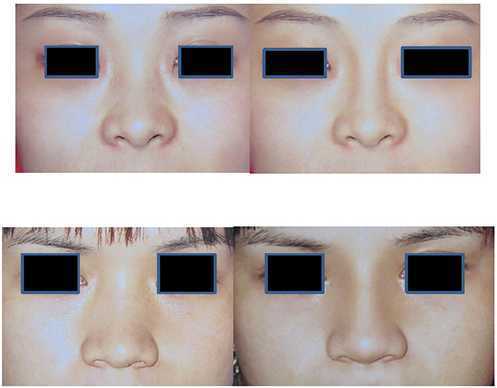Asian Rhinoplasty
Asian Rhinoplasty / Nose Implant

What is Asian rhinoplasty?
Asian rhinoplasty, also known as augmentation rhinoplasty or nose surgery, is a surgical procedure that aims to alter the shape or structure of the nose. It is most often performed as an augmentation procedure, meaning that additional material is used to build or reshape the nasal structure. This may involve the use of implants or tissues taken from other areas of the body (autologous tissue).
People may consider this procedure for personal or aesthetic reasons. It is important to understand that outcomes vary for each individual and no specific cosmetic result can be guaranteed.
How is Asian rhinoplasty performed?
There are different approaches to Asian rhinoplasty. The most appropriate method depends on a range of factors, including your individual nasal structure, preferences, and the surgeon’s clinical assessment.
Common techniques include:
- Implant augmentation rhinoplasty
- A silicone implant is used to reshape or build up the nose.
- Augmentation rhinoplasty with autograft tissue
- Cartilage from your own body (often from the ear or rib) is used instead of a synthetic implant.
- This approach may be recommended in certain situations where natural tissue is preferred.
Each technique has its advantages and limitations, which will be discussed in detail during your consultation so you can make an informed decision.
Considerations with silicone implants
Silicone implants are one of the most commonly used materials in augmentation rhinoplasty. Some points to consider include:
Potential benefits:
- They have been used in rhinoplasty procedures for many years.
- The surgery is generally less complex and requires less operating time compared to procedures using tissue grafts.
- Incisions can often be placed inside the nostrils, which may make scars less visible.
- The implant can typically be removed if required at a later date.
- The procedure can often be performed under local anaesthesia.
Potential risks and limitations:
- As with all implants, there is a possibility of complications such as infection, implant movement, or rejection.
- Not everyone is a suitable candidate for this approach.
- Removal or revision surgery may be required if complications occur.
Dr Xu will explain these factors to you and help determine whether a silicone implant is appropriate for your situation.
Procedure planning and technique
The surgical plan will depend on your individual nasal anatomy, facial proportions, and treatment goals.
- Some people may have a silicone implant placed to reshape the bridge of the nose, while cartilage grafts from the ear or septum may be used to refine the nasal tip.
- The final approach will be discussed with you in detail during your consultation, so you can make an informed decision about whether to proceed.
Surgery duration and anaesthesia
- Implant-based rhinoplasty: Usually performed under local anaesthesia and typically takes about 1 to 1.5 hours.
- Combined implant and cartilage graft procedure: May require sedation or general anaesthesia and usually takes 2 to 4 hours.
Dr Xu will recommend the most appropriate type of anaesthesia based on the complexity of the procedure and your health status.
Recovery process
Recovery will vary depending on the surgical technique used and your individual healing process.
- Swelling and bruising are common in the first few days following surgery.
- Recovery is generally quicker and swelling is usually less pronounced for simpler implant-based procedures.
- More complex surgeries, or those using an open approach, may result in more significant swelling and bruising, which may take longer to resolve.
Dr Xu will provide you with detailed post-operative care instructions to support healing and reduce the risk of complications.
Risks and potential complications
As with any surgical procedure, there are potential risks and complications. These may include:
- Bleeding or haematoma (a collection of blood under the skin)
- Infection
- Poor wound healing or scarring
- Implant-related complications, such as shifting or rejection
- Asymmetry or dissatisfaction with the outcome, which may require revision surgery
- Reactions to anaesthesia
Dr Xu will discuss these risks in detail before you decide to proceed with the surgery.
Important considerations
- Results vary for each individual and depend on factors such as anatomy, healing, and lifestyle.
- No specific outcome can be promised or guaranteed.
- These procedures do not stop the natural ageing process or prevent future changes to your nose and facial structure.
- A thorough consultation with a registered health practitioner is essential before making any decision about surgery.
